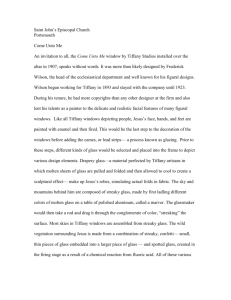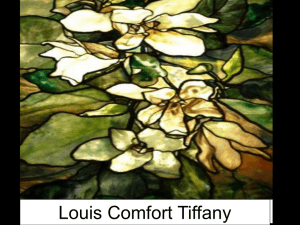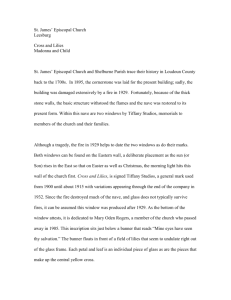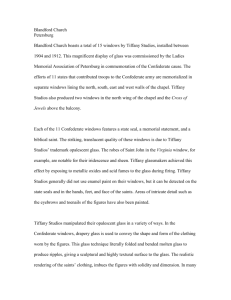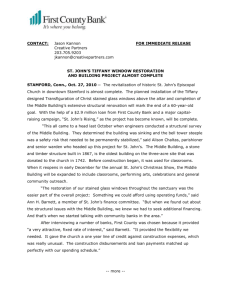Transcript
advertisement
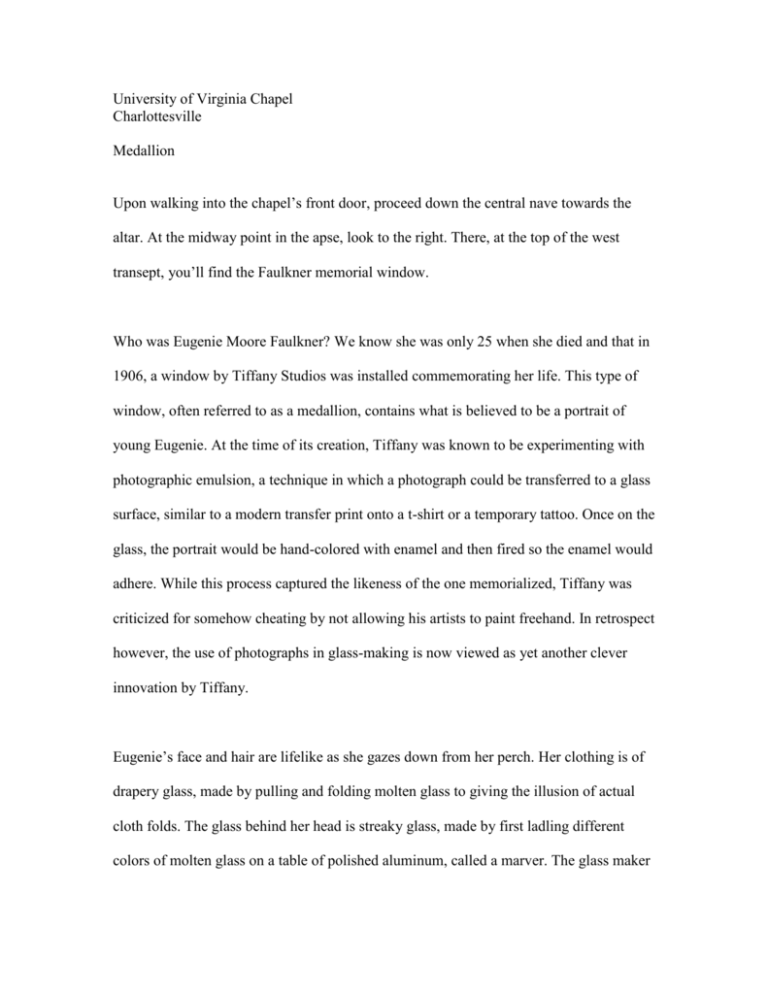
University of Virginia Chapel Charlottesville Medallion Upon walking into the chapel’s front door, proceed down the central nave towards the altar. At the midway point in the apse, look to the right. There, at the top of the west transept, you’ll find the Faulkner memorial window. Who was Eugenie Moore Faulkner? We know she was only 25 when she died and that in 1906, a window by Tiffany Studios was installed commemorating her life. This type of window, often referred to as a medallion, contains what is believed to be a portrait of young Eugenie. At the time of its creation, Tiffany was known to be experimenting with photographic emulsion, a technique in which a photograph could be transferred to a glass surface, similar to a modern transfer print onto a t-shirt or a temporary tattoo. Once on the glass, the portrait would be hand-colored with enamel and then fired so the enamel would adhere. While this process captured the likeness of the one memorialized, Tiffany was criticized for somehow cheating by not allowing his artists to paint freehand. In retrospect however, the use of photographs in glass-making is now viewed as yet another clever innovation by Tiffany. Eugenie’s face and hair are lifelike as she gazes down from her perch. Her clothing is of drapery glass, made by pulling and folding molten glass to giving the illusion of actual cloth folds. The glass behind her head is streaky glass, made by first ladling different colors of molten glass on a table of polished aluminum, called a marver. The glass maker would then take a rod and drag it through the conglomerate of color, “streaking” the surface. Most skies in Tiffany windows are assembled from streaky glass. Surrounding the portrait are swags of dogwood flowers, stylized petals, and laurel or holly leaves and red berries. A cross that surmounts the portrait emanates rays which shine down on Eugenie’s head, symbolizing Heaven or the Holy Spirit. Although the details of Eugenie’s life remain a mystery, it is clear she was beloved.
